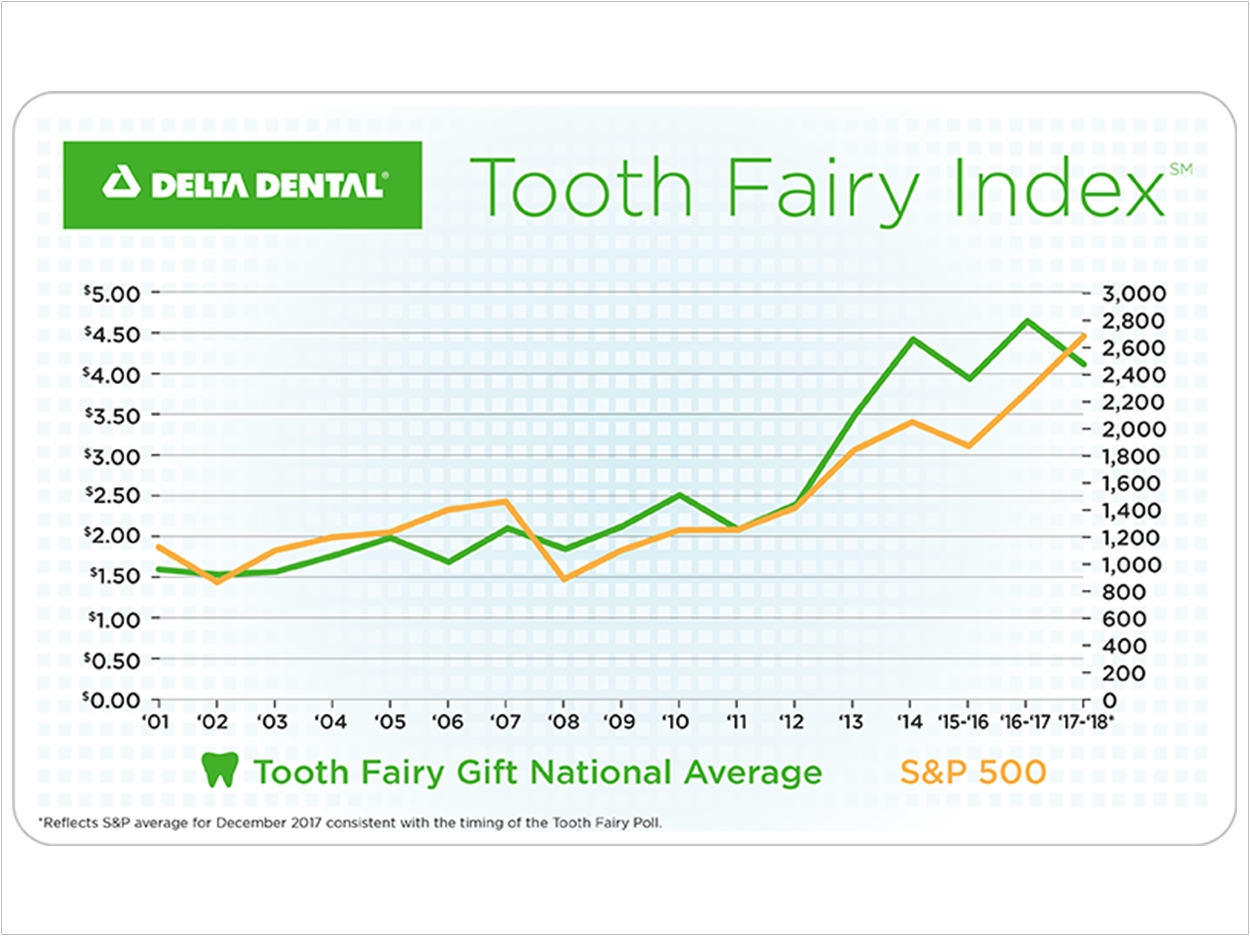
It looks like the Tooth Fairy tightened her belt last year. After a record average payout of $5.70 per tooth in 2016, she only stuffed $4.13 under each pillow in 2017, according to Delta Dental’s Original Tooth Fairy Poll.
Delta Dental reports that its poll has served as a good indicator of the economy’s overall direction, tracking with the movement of Standard & Poor’s 500 index for 12 of the past 14 years. This year, though, the Fairy and the market diverged, with the S&P seeing 18% in returns in 2017, while the Tooth Fairy’s gifts dropped in value by 11%.
Still, the Tooth Fairy paid out $271 million for lost teeth across the United States last year. Those children who lost their first tooth got the biggest bonus, at $5.70, though this is a dip from 2016’s first-tooth bonanza of $5.72.
“No matter how generous the Tooth Fairy decides to be, a visit from the Tooth Fairy is a great way to teach children good oral health habits at an early age,” said Jennifer Elliott, chief marketing officer for the Delta Dental Plans Association. “What better time to reinforce oral health messages than during the anticipation of a visit from the Tooth Fairy?”
While the Tooth Fairy leaves money at 95% of the homes she visits, some parents say she also leaves a small toy or game (47%), a letter (35%), or a toothbrush (31%) in addition to the money. In other statistics:
- The Tooth Fairy visits 84% of the nation’s households with children.
- 55% of parents confess that the Tooth Fairy may have missed a visit at some time.
- Payouts are highest in the West, averaging $4.85, or $6.76 for the first tooth.
- The Northeast is second at $4.35, or $6.45 for the first tooth.
- The South averaged $4.12 per tooth, or $5.68 for the first tooth.
- The Midwest averaged $3.44, or $4.37 for the first tooth.
The Original Tooth Fairy Poll was conducted between December 13 and December 28, 2017, among a nationally representative sample of 1,007 parents of children ages 6 to 12. The margin of error was ±3.1%.
Related Articles
What to Tell Your Patients About Tooth Eruption
Tooth Talk for Expecting Parents
Online Resources Support Baby’s First Dental Visit












